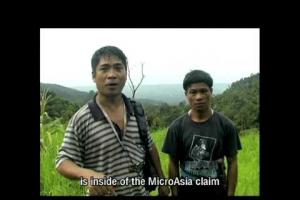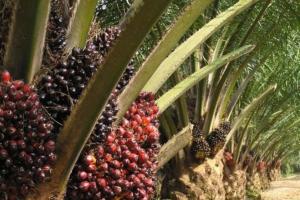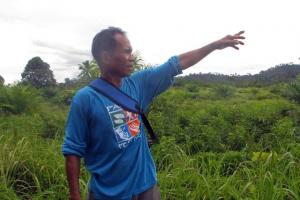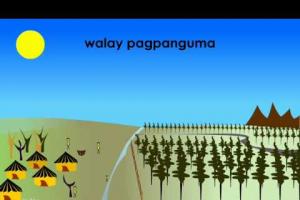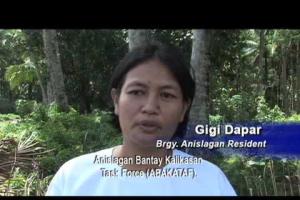ATM (the Alliance Against Mining), the largest anti-mining network in the Philippines, has issued a press release reporting that President Benigno Aquino III recently signed an Executive Order on mining. The EO focuses on establishing environmental safeguards and the need for a new revenue-sharing scheme, to maximize the country’s profits from mining. It did not mention other concerns of communities, not only in Palawan, but also in other mining-affected areas, such as social impacts and human rights violations.
Philippines
Other information
30 August 2012
Other information
30 August 2012
A video documentary launched on July 27 by ALDAW, showing the cultural values of Palawan and the encroachment of mining operations in ancestral domains.
frameborder="0" width="640" height="360">
Bulletin articles
30 July 2012
The Philippine A. Brown Company, Inc. is engaged in the business of oil palm plantation development and milling. In 2010, the company started planting oil palm on 520 hectares of public land claimed by the Higaonon indigenous people.
Bulletin articles
29 January 2012
Palawan, located between the Sulu and South China seas, is one of the most beautiful islands of the Philippine archipelago. The island is 450 kilometers long and 40 kilometers at its widest portion. Along its gorgeous beaches - framed by mangroves and by the last remaining lowland evergreen forest - coral reefs are home to unique marine biodiversity.
Other information
30 November 2011
On 10 November, indigenous peoples and farmer communities with people' s organization ALDAW gathered in Brooke's Point city, in the island of Palawan, to peacefully demonstrate against the visit of Chinese investors of the Jinchuan Group (JNMC). The Chinese group has already established partnership with MacroAsia Corporation for the exploitation and extraction of nickel.
Multimedia
11 September 2011
(Cebuano)
Unsa ang kahulugan sa kalasangan ngadto sa katawhan? Kini nga kalasangan nagkahulugan og kinabuhi. apan unsa sa pikas bahin ang plantasyon sa kakahuyan?
Bulletin articles
5 June 2011
There are around 110 ethno-linguistic groups in the Philippines and they constitute almost 15% of our population. Most of them live in mountain ranges and coastal areas. (1) Nine million or roughly 30% of our total land area is mineralized including some of the mountains inhabited by those groups.
Bulletin articles
5 June 2011
The Palawan Province has the best-conserved and most ecologically diverse forest in the Philippines inhabited by vulnerable indigenous communities, some of them living in partial isolation.
Bulletin articles
30 April 2011
SAY NO to mining in Palawan Province, the home of the best-conserved and most ecologically diverse forest in the Philippines. Sign the on-line signature petition to deliver a strong message to the Philippine and Palawan governments demanding for an immediate stop of ongoing and pending mining activities in Palawan and for the non-endorsement of new mining applications.Here is the link to the petition launched by the Save Palawan Movement: http://www.intellithink.com.ph/wordpress/
Other information
30 December 2010
In the Philippines, mining, along with logging, has been among the forces behind the country’s loss of forest cover: from 17 million hectares in 1934 to just three million in 2003 or an 82 per cent decline. While about sixty per cent of the country’s land area was covered with forest seventy years ago, now it is less than ten per cent.
Bulletin articles
30 January 2009
More than three years ago, a large vessel arrived without warning at Tañon Strait, one of the richest fishing grounds in Central Philippines and a global center for marine biodiversity. For two months, the M/S Veritas Searcher owned by the Japan Petroleum Exploration Co. Ltd. (Japex) roamed the strait to determine the existence of oil and natural gas deposits using highly sophisticated technology to detect and determine the extent of these deposits.
Bulletin articles
12 February 2004
The Center for International Forestry Research has implemented a program called Adaptive Collaborative Management of Forests (ACM) for more than five years. At its most extensive, we worked in 11 countries (Nepal, Indonesia, Philippines, Kyrgyzstan, Malawi, Cameroon, Zimbabwe, Ghana, Madagascar, Bolivia and Brazil); and activities continue in eight. One of the striking elements of this work has been our success at involving women (and other marginalized groups) in our work with communities.

